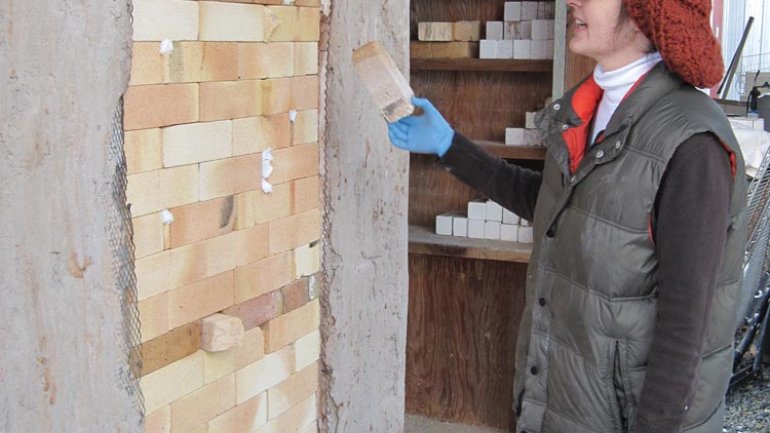Fueled Up
Fueled Up
From the window of her pottery studio, Joy Tanner looks out on the kind of pristine view most artists only dream of: mountains, countryside. There’s no hint that the rolling expanse of green just down the hill was once a noxious sea of garbage, now invisible as it decomposes underground. Occasionally she hears the rumble and clank of trucks, come to drop off ... more trash?
It all makes sense at EnergyXchange, a renewable energy center in western North Carolina, where Tanner is one of six artists doing a three-year residency at the world’s first craft facility powered by methane gas from a capped landfill and everyday discards.
“I’ve always been an avid recycler, and now I strive to be a conscious consumer. Coming to work here clarifies this awareness,” Tanner says. “My interests in sustainability and the environment have greatly deepened.”
“It’s probably the most beautiful dump site you’ll ever see,” says Dan Asher, executive director of EnergyXchange, which encompasses clay and glass studios, a gallery and an education center, and a waste-transfer station where local residents bring household and industrial refuse to be burned as extra fuel for the kilns and furnaces. (There are also greenhouses; EnergyXchange’s other focus is horticulture, propagating the region’s rare and native flora.) Back in 1994, the Environmental Protection Agency determined that the six-acre landfill in Burnsville had reached maximum capacity, and engaged the community in a pilot program to find a productive use for the methane it was generating. “
Raw methane is 21 times greater at holding heat in the atmosphere as a greenhouse gas than carbon dioxide [is],” Asher explains. “So it’s really important to combust that gas. And that’s a lot of energy.”
Local organizations joined together and came up with the idea of a nonprofit center that would be a business incubator for craftspeople – a fitting choice given the rich history and culture of handwork in the region, home to the famed Penland School of Crafts and many makers. “We were breaking new ground in many ways,” recalls Becky Anderson, founder and then-director of HandMade in America, one of the groups involved in raising $1.5 million to build the gas collection system and campus, which welcomed its first resident artists in 2001. She remains a big booster of EnergyXchange, proud of the success it has had as a model for economic development and sustainable practice, and an attraction for visitors from all over the world. “It shows that on top of a landfill in a rural community, you can have cutting-edge science, technology, and creative artistry.”
“I’m happy for the chance to lessen my carbon footprint, but the main advantage of working with landfill gas is financial,” says glassblower Michael Hatch, who began his residency in fall 2010. “The enormous overhead of a hot-glass studio forces many glass artists to focus on production of salable items and discourages experimentation. This residency has allowed me to focus more of my attention on one- of-a-kind sculptural works that have spent years on the back burner.” Plus, all the trash has spurred Hatch to look at materials in new ways: He has begun incorporating found objects and salvaged wood in his sculptures.
Halfway through her time
at EnergyXchange, Tanner is feeling inspired as well. “The sustainable efforts I’ve witnessed and learned here go hand in hand with my perspective as an artist,” she says. “The hand-carved patterns and textures in my work are direct reflections of my love for the nature surrounding me.
I strive to bring it full circle – directly into the hands that will use my pots. Perhaps by seeing these impressions, those people, too, will realize the importance of our environment and make sustainable choices in their lives.”
Joyce Lovelace is American Craft’s contributing editor.




